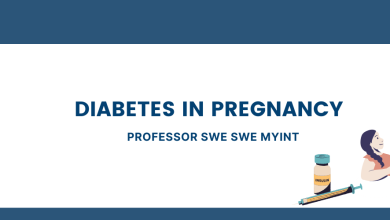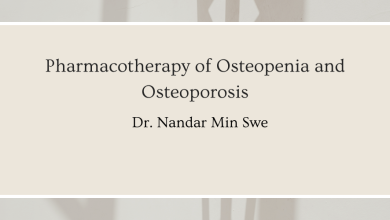Abstract
Objectives: Chronic hepatitis C virus (HCV) infection remains a major public health challenge around the world including Myanmar and whole Asia. This article outlines awareness and understanding of swiftly evolving newer regimens of Direct Acting Antiviral (DAA) from international guidelines, for Primary Care Practitioners (PCPs)/General Practitioners (GPs). This piece also discusses minimal required tests which still remain as a barrier for treatment access even in developed countries let alone countries/regions with limited resources.
Methods: Literature (from 2016 onwards from PubMed) and the latest major guidelines (updated 2017) from North America, Europe, Asia-Pacific, Australasia and the World Health Organization were reviewed using the Grading of Recommendations, Assessment, Development and Evaluations (GRADE) system.
Results: The regimens of DAA including Pangenotypic options (covering all genotypes) are well promising with cure rate over 95% plus well tolerability, fewer side effects and shorter course. Its viral eradication also gives multiple clinical benefits- improvement in quality of life, loss of infectivity, regression of liver fibrosis/cirrhosis, and lower risk of liver failure & cancer (hepatocellular carcinoma) and reduced mortality.
Conclusion: PCPs/GPs in the community including from remote areas, are actively encouraged to treat those infected persons, given high prevalence and increasing burden if treatment uptake is low. Pangenotypic option offers some advantages with greater simplicity.
Keywords: Direct Acting Antiviral, DAA, HCV, Hepatitis C, Primary care practitioner.
Introduction
Although reportedly declining from old studies of 185 million people (2-3%) to 130–150 million globally with chronic HCV infection, death from HCV-related liver diseases continues surge from 333,000 in 1990, to 500,000 in 2010 and 700,000 in 2013.[6] Significant number of the HCV infected develop liver cirrhosis or liver cancer leading to increased morbidity and mortality. HCV infection is the most common cause of liver transplantation in western countries and could also be one of leading causes for cirrhotic liver in developing countries. The HCV-related disease burden is already high and is projected to rise steeply over the coming decades if no improvement in management is made.[6,27,28]
The prevalence in Myanmar is difficult to validate, nevertheless recent publication indicates 2.65% (n = 5547, DMR).[30] However, the rate could be higher in provincial states and border towns by citing 11.6% (n = 1333, study of four border towns/cities in 2007).[31] In comparison, the whole of Southeast Asia region has 2.15% (32.3 million), Australasia 1.5- 2%, USA 1.8-2% and China 2-3%.[32-34]
Diagnosis and Pre-treatment Assessment
First of all, diagnosis for HCV infection is to be established as in figure 1 with initial HCV antibody (Ab) test. If positive, then HCV RNA test (qualitative/quantitative) which will indicate current or active infection, those who require treatment. Next step is to identify Genotype (Gt) and ± fibrosis/cirrhosis, as selection of drug regimen depends on HCV genotype and in a genotype specific manner, the presence of cirrhosis and/or prior HCV treatment failure, and please refer to below Table 2 for details.
Figure1. Test flow diagram for HCV Infection

The gold standard to rule out fibrosis/cirrhosis is liver biopsy which is an invasive procedure with risks and unfeasible even in developed countries. Thus, non-invasive tests are becoming more favourable. Serum biomarker-based fibrosis assessment (such as APRI, Fib-4 score, in table 1) are cost-effectively useful if imaging is inaccessible. Details of pre-treatment assessment is to be referred to local administration body or “Revolution in Hepatitis C Treatment: Cured plus other benefits” of Myanmar Medical Journal, September 2016, and consensus statement 2017 from Gastroenterological Society of Australia (GESA).[4,29]

Treatment and Medications
The goal of treatment is cure, or SVR (Sustained Virological Response), defined as undetectable plasma HCVRNA at least 12weeks after treatment. Latest treatment options are simplified and compiled with based on level of evidence and strength of the recommendation (table 2) from: AASLD (American Association for the Study of Liver Diseases) and IDSA (Infectious Diseases Society of America), EASL (European Association for the Study of the Liver), APASL (Asian Pacific Association of Study of Liver), GESA (Gastroenterological Society of Australia),WHO (World Health Organization), and a number of literatures review.[1-234567892023456789]
As per several updated guidelines and reviews, sofosbuvir/velpatasvir (400/100mg) or glecaprevir/pibrentasvir (300/120mg) one tablet daily was recommended as a truly pangenotypic treatment option (Gt 1 – 6) regardless of fibrosis/cirrhosis status with strong evidence.[1-234567892023456789]This is a good newsflash for regions with lack of full resources for pre-treatment assessment.2346789
Genotype (Gt) 3, 6 and 1 are common in Myanmar in order [31], although type 1 (46%-49%)is highly prevalent worldwide, followed by 3, 2, 4, 6 and 5 in order.[32-34]Gt 6 is mostly confined to Southeast Asia and South western part of China, 4 to North Africa and Middle-east, and 5 to South Africa. Of note, Gt3 may pose a treatment challenge due to relatively faster progression to fibrosis or cirrhosis, and highly associated with steatosis and hepatocellular carcinoma.[35,36]In general, regimens for difficult or complicated cases are longer duration (24 weeks) with ±Ribavirin and/or addition of Interferon.

Treatment Monitoring and Follow-up [4,29]
On-treatment, monitoring for medication adherence, side effects (figure 2) and liver function should be performed. Quantitative HCV PCR testing should be considered if there are concerns about adherence or viral resistance. Qualitative HCV PCR testing at the end of treatment is reasonable to confirm an end-of-treatment response, however given the high efficacy of DAA therapy, such monitoring is not mandated in all individuals. All patients should have drug-drug interactions assessed prior to and on-treatment. For more information, please refer at University of Liverpool web site, http://www.hep-druginteractions.org/. In order of blood test monitoring are:
- Week0: FBC, RFT, LFTs, PT, HCVRNA level (quantitative/viral load)
- Week4: FBE,LFTs
- Week12±24 (EOT= end of treatment): FBE, LFTs, HCVPCR (qualitative/viral detection test).
(FBC= Full Blood Count, RFT= Renal Function Test, LFTs= Liver Function Test, PT= Prothrombin Time).

Discussion
Globally, liver diseases and its consequences (e.g. cirrhosis, cancer) remain as major morbidity and mortality. In most countries, disparity in health-care delivery and public access exists, especially in small towns and rural and remote areas. This is not the case in metropolitan cities where teaching medical schools/hospitals and specialists practice. Lack of an imaging-based fibrosis test should not hinder the treatment accessibility. PCPs are well positioned in the delivery of better access treatment for patients across the country. Pangenotypic options are simply opportunistic regimes to apply either genotype if there is lack of resources to carry out the full pre-treatment assessment. There are also growing pangenotypic options (e.g., Sofosbuvir/Velpatasvir/Voxilaprevir), which should be reserved for drug resistance cases. It is reasonable to choose cost-effective regimes or following local guidelines to minimise the cost barrier. Elimination of HCV by 2030 as per WHO seems possible to achieve for each region and worldwide, provided there is improvement in screening, diagnosis and access to treatment.

Acknowledgement: Author is grateful to Prof Tha Hla Shwe (Rtd Rector), Prof Win Myaing (Urologist), and Dr P J Clark (FRACP), Hepatologist and Gastroenterologist, Princess Alexandra Hospital & University of Queensland of Brisbane, QLD, Australia for their motivation and encouragement.
Disclosure: There is no conflict of interest and no financial grant from any organisation and individual.
References
[1][2] [3][4] [5][6][7] [8] [9] [10][11][12] [13][14][15][16][17][18] [19] [20] [21][22][23][24][25][26][27][28][29] [30[31][32][33][34][35][36].
- AASLD (American Association for the Study of Liver Diseases) and IDSA (Infectious Diseases Society of America). Recommendations for Testing, Managing, and Treating Hepatitis C. USA; 2017 September. http://www.hcvguidelines.org/. Access 2018,January 23.
- EASL (European Association for the Study of the Liver). Recommendations on Treatment of Hepatitis C 2016. Journal of Hepatology; 2017 Jan;66(1):153-194; doi: 10.1016/j.jhep.2016.09.001. PMID: 27667367
- APASL (Asian Pacific Association of Study of Liver). Consensus statements and recommendation on treatment of hepatitis C. Hepatol Int. 2016 Sep;10(5):702-26. doi: 10.1007/s12072-016-9717-6. PMID: 27130427. http://apasl.info/apasl-hcv-guideline-treatment-2016.pdf.Access 2017 June.
- GESA (Gastroenterological Society of Australia). Australian recommendations for the management of hepatitis C virus infection: a consensus statement (August 2017). Australia; updated 2017 August. http://www.hepcguidelines.org.au; www.gesa.org.au;Access 2018 January.
- NZSG (New Zealand Society of Gastroenterology). HCV Treatment Guidelines. November 2016 (update). http://www.nzsg.org.nz/cms2/guidelines/. Access 2018 January.
- WHO (World Health Organisation). Guidelines for the Screening,Care and Treatment of Persons with Chronic Hepatitis C Infection: Updated Version. Geneva: World Health Organization; 2016 Apr. ISBN 978 92 4 154961 5. PMID: 27227200.Access 2017 June.
- WGO (World Gastroenterology Organisation). WGO Global Guidelines Hepatitis C (long version): Diagnosis, Management, and Prevention of Hepatitis C. 2017 Update. http://www.worldgastroenterology.org/guidelines/ global-guidelines/hepatitis-c/hepatitis-c.Access 2017 June.
- Falade-Nwulia O, Suarez-Cuervo C, Nelson DR, Fried MW, Segal JB, et al. Oral Direct-Acting Agent Therapy for Hepatitis C Virus Infection: A Systematic Review. Ann Intern Med. 2017 May 2;166(9):637-648. doi: 10.7326/M16-2575. PMID: 28319996.
- Kish T, Aziz A, Sorio M. Hepatitis C in a New Era: A Review of Current Therapies. P & T. 2017 May;42(5):316-329. PMID: 28479841.
- Li G, De Clercq E. Current therapy for chronic hepatitis C: The role of direct-acting antivirals. Antiviral Res. 2017 Jun;142:83-122. doi: 10.1016/j.antiviral.2017.02.014. PMID: 28238877.
- Zhang J, Nguyen D, Hu KQ. Chronic Hepatitis CVirus Infection: A Review of Current Direct-Acting Antiviral Treatment Strategies. N Am J Med Sci (Boston). 2016 Apr;9(2):47-54. doi: 10.7156/najms.2016.0902047. PMID: 27293521.
- Kwo PY, Poordad F, Asatryan A, Wang S, Wyles DL, et al. Glecaprevir and pibrentasvir yield high response rates in patients with HCV genotype 1-6 without cirrhosis. J Hepatol. 2017 Aug;67(2):263-271. doi: 10.1016/j.jhep.2017.03.039. PMID: 28412293.
- Forns X, Lee SS, Valdes J, Lens S, Ghalib R, et al. Glecaprevir plus pibrentasvir for chronic hepatitis C virus genotype 1, 2, 4, 5, or 6 infection in adults with compensated cirrhosis (EXPEDITION-1): a single-arm, open-label, multicentre phase 3 trial. Lancet Infect Dis. 2017 Oct;17(10):1062-1068. doi: 10.1016/S1473-3099(17)30496-6. PMID: 28818546.
- Lim SG. HCV management in resource-constrained countries. Hepatol Int. 2017 May;11(3):245-254. doi: 10.1007/s12072-017-9787-0. PMID: 28224352.
- Nehra V, Rizza SA, Temesgen Z. Sofosbuvir/velpatasvir fixed-dose combination for the treatment of chronic hepatitis C virus infection. Drugs Today (Barc). 2017 Mar;53(3):177-189. doi: 10.1358/dot.2017.53.3.2604176. PMID: 28447075.
- Lee R, Kottilil S, Wilson E. Sofosbuvir/velpatasvir: a pangenotypic drug to simplify HCV therapy. Hepatol Int. 2017 Mar;11(2):161-170. doi: 10.1007/s12072-016-9776-8. PMID: 27928718.
- Mir F, Kahveci AS, Ibdah JA, Tahan V. Sofosbuvir/velpatasvir regimen promises an effective pan-genotypic hepatitis C virus cure. Drug Des Devel Ther. 2017 Feb 23;11:497-502. doi: 10.2147/DDDT.S130945. PMID: 28260862.
- Chahine EB, Sucher AJ, Hemstreet BA. Sofosbuvir/Velpatasvir: The First Pangenotypic Direct-Acting Antiviral Combination for Hepatitis C. Ann Pharmacother. 2016 Sep. DOI: 10.1177/1060028016668897. PMID: 27609942.
- Bonaventura A, Montecucco F. Sofosbuvir/velpatasvir: A promising combination. World J Hepatol. 2016 Jul 8;8(19):785-9. doi: 10.4254/wjh.v8.i19.785. PMID: 27429714.
- American Medical Association. From the Medical Letter on Drugs and Therapeutics. FDA approved Sofosbuvir/Velpatasvir for Hepatitis C all Genotypes. JAMA. 2017 Feb 14;317(6):639-640. doi: 10.1001/jama.2016.12279. PMID: 28196252.
- Papastergiou V, Tsochatzis E, Burroughs AK. Non-invasiveassessment of liver fibrosis. Annals of Gastroenterol. 2012;25(3):218-231. PMID:24714123.
- Macarini L and Stoppino LP. Radiologic Assessment of Liver Fibrosis – Present and Future, Practical Management of Chronic Viral Hepatitis, Prof. Gaetano Serviddio (Ed.) (2013), InTech, doi: 10.5772/55164. https://www.intechopen.com/books/.
- Lin ZH, Xin YN, Dong QJ, et al. Performance of the aspartate aminotransferase-to-platelet ratio index for the staging of hepatitis C-related fibrosis: an updated meta-analysis. Hepatology. 2011;53:726-36. doi: 10.1002/hep.24105. PMID: 21319189.
- Chou R, Wasson N. Blood tests to diagnose fibrosis or cirrhosis in patients with chronic hepatitis C virus infection: a systematic review. Ann Intern Med. 2013;158:807-20. doi: 10.7326/0003-4819-159-5-201309030-00021. PMID: 24026329.
- Sterling RK, Lissen E, Clumeck N, et al. Development of a Simple Noninvasive Index to Predict Significant Fibrosis in Patients With HIV/HCV Coinfection. Hepatology. 2006 Jun;43(6):1317-25. doi: 10.1002/hep.21178. PMID: 16729309.
- Vallet-Pichard A, Mallet V, Nalpas B, Verkarre V, et al. FIB-4: an Inexpensive and Accurate Marker of Fibrosis in HCV Infection. Comparison with Liver Biopsy and FibroTest. Hepatology. 2007 Jul;46(1):32-6. doi: 10.1002/hep.21669. PMID: 17567829.
- Clark PJ, Muir AJ. Overcoming barriers to care for hepatitis C. The New England journal of medicine. 2012 Jun 28;366(26):2436-8. doi: 10.1056/NEJMp1202608. PMID: 22738095.
- Averhoff FM, Glass N, Holtzman D. Global burden of hepatitis C: considerations for healthcare providers in the United States. Clin Infect Dis. 2012 Jul;55 Suppl 1:S10-5. doi: 10.1093/cid/cis361. PMID: 22715208.
- Tim Aung. Revolution in Hepatitis C Treatment: Cured plus other benefits. Myanmar Medical Journal, September 2016 Vol: 58, No. 3, P55-62.
- Aye Aye Lwin, Khin Saw Aye, Moh Moh Htun, Yi Yi Kyaw, Ko Ko Zaw, Toe Thiri Aung, Myat Phone Kyaw, Khin Pyon Kyi, & Kyaw Zin Thant (DMR, DPH, MLF, Myanmar). Prevalence of Hepatitis B and C in Myanmar. 44th Myanmar Health Research Congress, Paper-47, 5th January 2016.
- Aye Aye Lwin, T Shinji, Myo Khin, Ne Win, S Okada, N Koide. HCV genotype distribution in Myanmar: Predominance of genotype 6 and existence of new genotype 6 subtype. Hepatol Res. 2007 May;37(5):337-45. doi: 10.1111/j.1872-034X.2007.00053. PMID: 17441806
- Petruzziello A, Marigliano S, Loquercio G, et al. Global epidemiology of hepatitis C virus infection: An up-date of the distribution and circulation of hepatitis C virus genotypes. World J Gastroenterol. 2016 Sep 14;22(34):7824-40. doi: 10.3748/wjg.v22.i34.7824. PMID: 27678366.
- Gower E, Estes C, Blach S, Razavi-Shearer K, Razavi H. Globalepidemiology and genotypedistribution of the hepatitis C virus infection. J Hepatol. 2014 Nov;61(1 Suppl):S45-57. doi: 10.1016/j.jhep.2014.07.027. PMID: 25086286.
- Messina JP, Humphreys I, Flaxman A, Brown A, Cooke GS, et al. Globaldistribution and prevalence of hepatitis C virusgenotypes. J of Hepatology; 2015 Jan;61(1):77-87. doi: 10.1002/hep.27259. PMID: 25069599.
- Johnson SW, Thompson DK, Raccor B. Hepatitis C Virus-Genotype 3: Update on Current and Emergent Therapeutic Interventions. Curr Infect Dis Rep. 2017 Jun;19(6):22. doi: 10.1007/s11908-017-0578-5. PMID: 28421422.
- Ampuero J, Romero-Gómez M, Reddy KR. Review article: HCV genotype 3- the new treatment challenge. Aliment Pharmacol Ther. 2014 Apr;39(7):686-98. DOI: 10.1111/apt.12646. PMID: 24612116.







